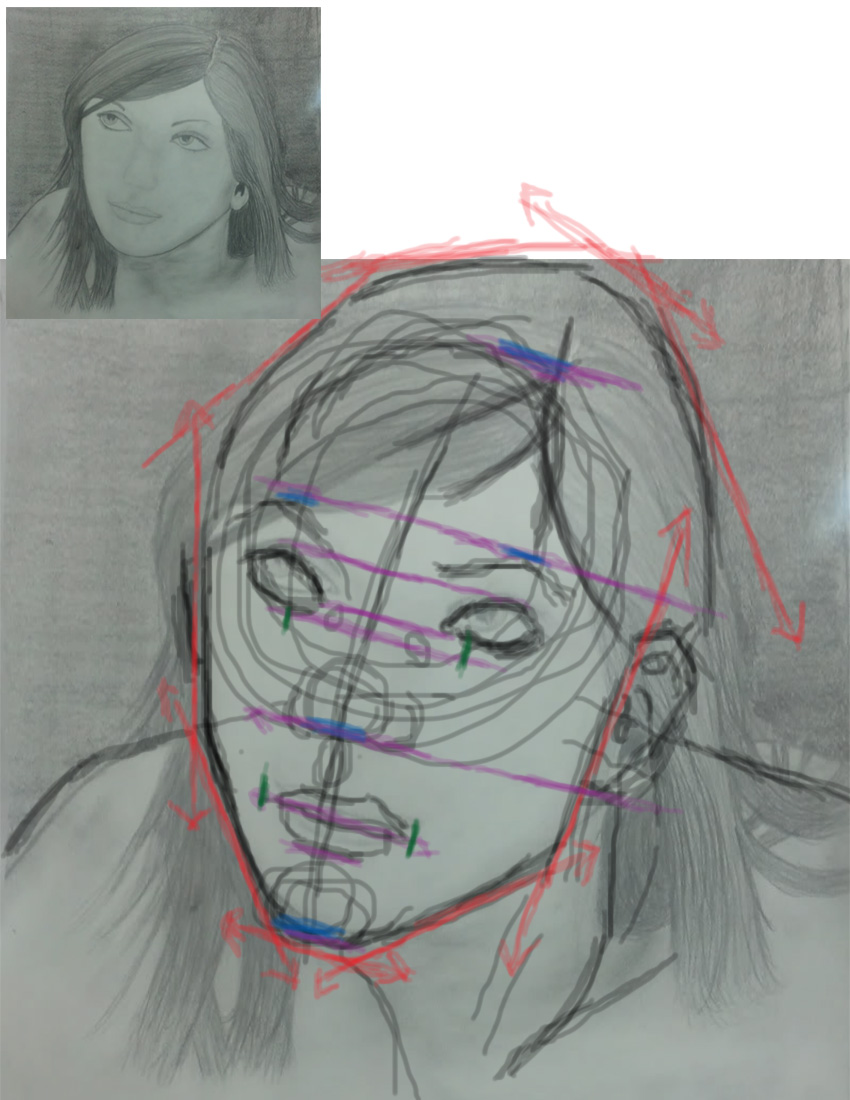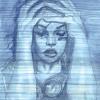Jynxie
Member since: 2008I don't often look through the forum posts, but I noticed this one by Xan asking for a crit of a piece he had done. Bear with me here, Xan.
First of all, your artwork already looks pretty good. Drawing human anatomy is one of the hardest things to do, and there is no shame at all in using references to help you understand form, whether it is a picture, a sculpt, ext. While it is good to draw from your head it is not always practical, and you will find that many artists tend to draw more from memory (ex: a pose they have drawn over and over. If you pay attention to pieces of art especially in comics you will notice some people tend to do similar poses over and over again. This is likely drawing from memory.) Artists also tend to do a sketch or thumbnail and then use references (preferably stuff they took themselves) to help them define their drawings as it comes to a final. This includes a number of things from movement, form, lighting, costumes, ect.
With that being said.....
I made a smaller image of your piece for comparison in the upper left corner of this image, and used the same image, a little larger, and at about 80% oppaccity to do a paint over. Since I don't have the same image as you did for reference, I am left to making some assumptions with this. First of all you were good to start out by drawing the shape of the face, but you should instead draw the overall shape of the head. Remember that the face is just a part of the head =}
I did this in black (sorry the lines are crap, it's been a while since I used my tablet pen). Once that is done, I lightly drew a line down the center of the face, which is slightly rounded since the head is not flat. From here I have my own way of doing heads. I like to draw a little chin bubble or circle at the base of the face. I find this helps me to determine where the lips should go. Notice that I do not draw my lips ontop of this bubble (at least not in this picture since the angle of the head is not looking down where the lower lip would cause an overlap). From here I am able to rough in where the other features of the face should be. Notice there is not much of a deviation from my paint over in relation to your actual artwork, so you weren't too far off.
Now what is important is understanding proportions. Typically (since everyone has a unique face) the distance from the tip of the chin to the bottom or the tip of the nose counts as one unit of measure for the face. That is to say that this distance should also be the same or similar distance from the base of the nose to the base of the eyebrow, to the hairline. You can see these measurements in blue.
Angles are also important. You will notice that the angles that the mouth, nose, ect all tend to lay at about the same angle. This is very helpful in defining where the ears should fall, even if they are obscured by hair. Also note that often times the hair comes down from the hairline, as seems to be the case in this piece in particular. Eyes also have thier own relation in regards to the proportion of the lips. Usually the ends of the mouth fall about 1/4 the way into the eye, the side of the nose is about the first measure for the eye.
I don't know how or if you will find any of this jibberish useful. Your drawing already looks pretty solid. The hair is especially nicely handled, and tends to remain a problem area for most people when it comes to rendering (myself included). Remember to stick to simple shapes and pay attention to the angles for things. If you start off with light pencil marks it is easy to build up detail. Avoid paying so much attention to certain areas of your drawing, because it will make the overall piece suffer for lack of attention/focus. I see that the nose in this was probably an issue for you, since it remains very light. Try using the simple shapes, or a light grid to help improve your skills, and keep using photo references or draw from life if you can. Remember your work doesn't have to be perfect, but you should see improvement, even if they are in small things.
Good luck Xan, and well done!





Comments
Thank you Jynx, I appreciate the time you took to do all of this... And once I decipher the information you gave ((my unartistic brain isn't picking it up on the first read through)) I'll see what I can do to apply it. :)
NP. I've been lucky to have friends or other professionals take the time out to do paintovers or otherwise offer out some help to me in my artmaking. I would encourage you and anyone else reading this to at least pick up and practice from author/artists like Hogarth. Or to take a class, even if it's a simple course at a comunity college. Doing things on your own is great, but it leaves you blind to a lot of errors or things you should be improving upon in your work. I think this is especially true for some digital artists. I've talked to professionals who agree that sometimes with digital you lose out on fundamental learning unless you really push yourself to do 'boring' pieces. I have a friend who is like this in both traditional and digital media, which is bad for him because he doesn't relate well to people who have tried to hire him. And now none of us who know him will vouch for him or try to help him get work because he is stuck in his way of working.
I myself want to take a few more classes. College I think, has it's pros and it's cons, and I know that it's not always a fit for everyone or a financial ability. I racked up some debts from college, but at the same time I knew it was the thing I needed, and still need. Other than that I too kind of rely on crits from friends, mostly online now that I have moved out of Illinois or my buddies have moved back to their home towns. A lot of us tend to continue to rely upon one another for crits and what not, and we always keep in touch with our instructors. But I have found sites like this to be helpful for different reasons, and I think it is good and healthy to reach out for help on your work. I sometimes wonder if my crits come off harsh or snobby to people who haven't been to school and learned to deal with crits. Some of them were pretty brutal, and some continue to be. That's another reason my buddy can't get work, he feels insulted too often by AD's giving him crits on what to improve.
Last summer I got a list of crits from the AD for MTG. I keep it up on my work space, and while it's been hard at times to know that my work isn't there yet, it's also helpful to have gotten encouragement from the AD about my work and some pointers to heed, as well as some artists to keep an eye on to help me with my work. I think what caught my eye about your drawing was that it reminded me a little of where I was before college. So keep up the work, and plow though the hard times because it's not really like you can do worse. You can think you are, but in a few years you'll be able to see you were really improving.
Thanks Jynx... I've been writing long enough to know that crits aren't just appreciated but really needed. Without them you'll never get a book polished. But with a few crits you can make a piece of art...
I did this drawing just to see if I could.. MY sister and my mother are really good at art, figured I'd give it a try.
Oh, and the finished picture is here.